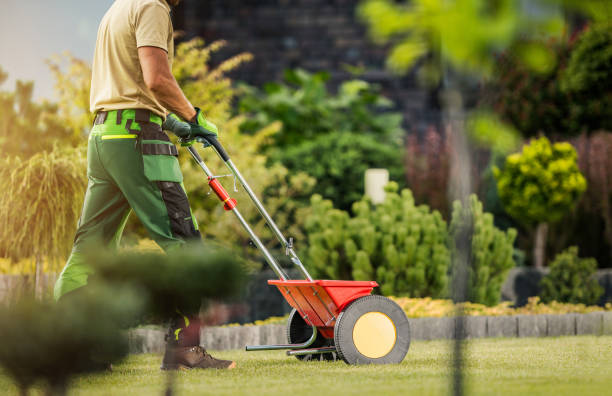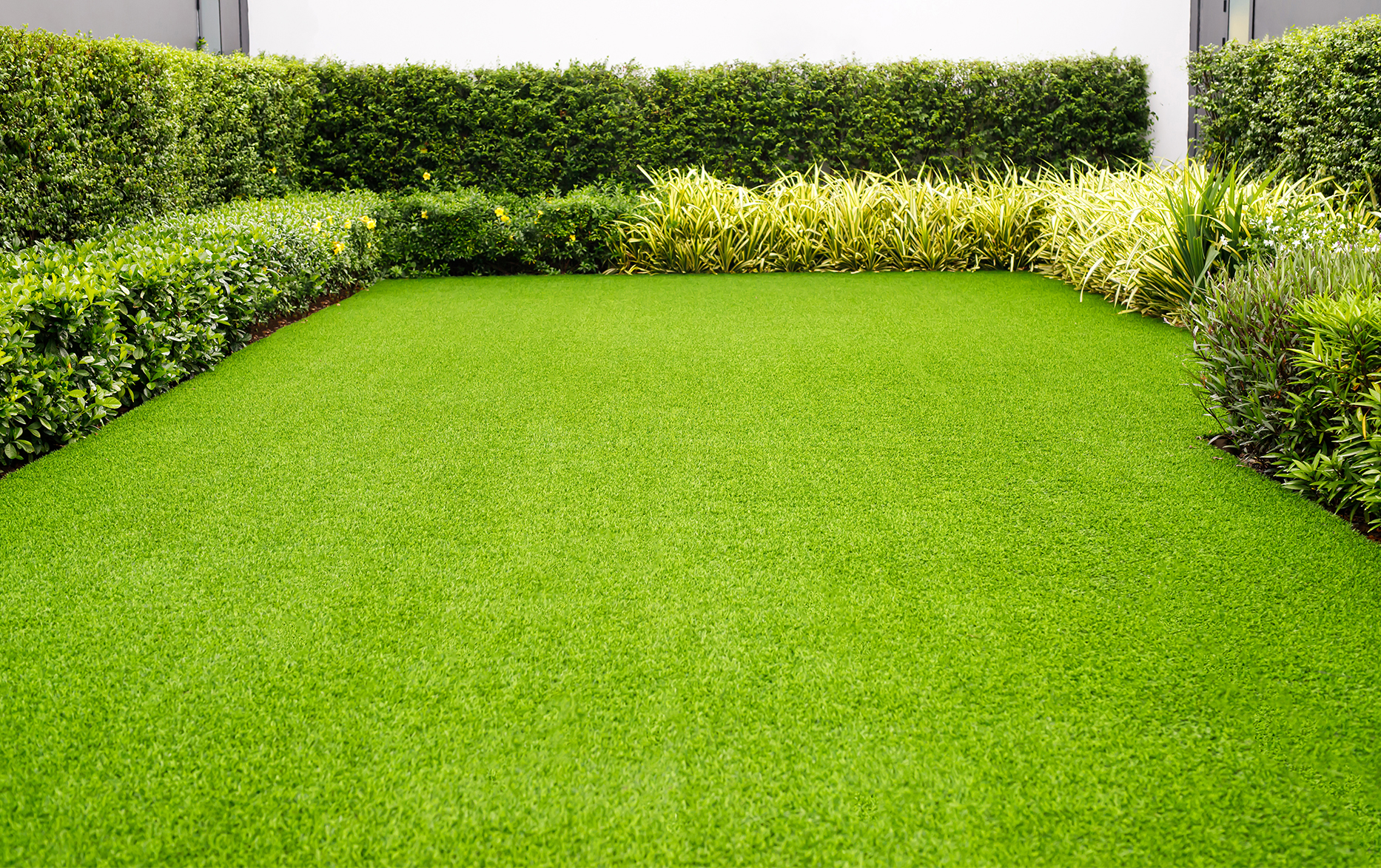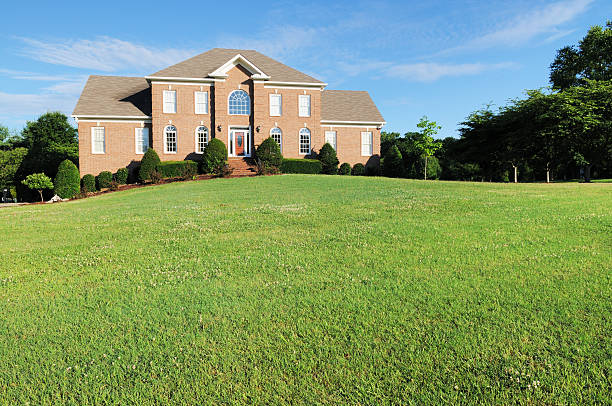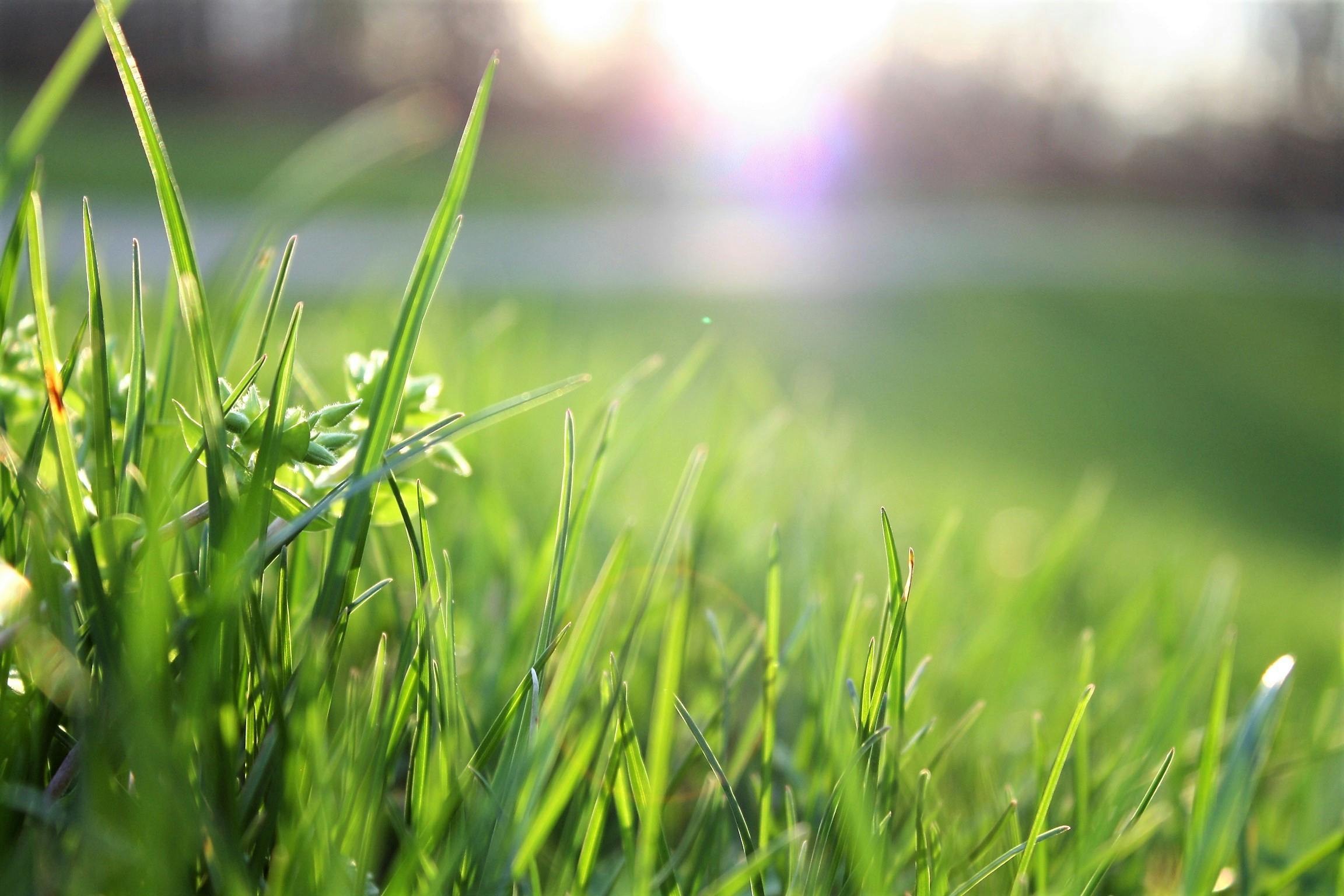Ever wonder why some lawns in Chattanooga look effortlessly green and healthy while others struggle? Sure, regular watering and mowing help, but there’s another secret ingredient: well-timed fertilization. When it comes to lawn fertilization Chattanooga TN, timing is everything. Fertilizing at the right time of year ensures your grass gets the nutrients it needs exactly when it can use them the most. In this guide, we’ll walk through the best times to fertilize your lawn season by season. With a solid schedule (and maybe a little help from the pros), you can keep your Chattanooga yard looking its best all year long.
Why Timing Matters for Lawn Fertilization
Chattanooga’s climate is a bit unique – we’re in a “transition zone” where both cool-season and warm-season grasses can grow. This means timing your lawn fertilization is especially important, because the needs of your grass will change with the seasons. Apply fertilizer too early or late and you might waste it (or worse, harm your lawn). By fertilizing at optimal times, you:
-
Maximize nutrient uptake: Grass can only absorb fertilizer when it’s actively growing. The goal is to feed it during its growth spurts.
-
Reduce weed and disease problems: Feeding at the wrong time (like mid-summer for cool-season grass) can weaken your lawn and invite pests or fungus.
-
Get more bang for your buck: Fertilizer isn’t free! Proper timing avoids wasted product that could wash away or not get used by the grass.
In short, timing is everything for a healthy lawn. If you plan lawn fertilization Chattanooga TN around the seasons, you’ll keep your grass greener (and your wallet happier) in the long run. Let’s break down the game plan for each season in Chattanooga, TN.
Spring (March–May): Kickstart Your Lawn’s Growth
Spring is the season when everything in your yard wakes up – including your grass. After a chilly winter, your lawn (especially warm-season grasses like Bermuda or Zoysia) is ready to start growing again. Here’s how to handle spring lawn fertilization in Chattanooga, TN:
-
Wait for the green-up: Don’t rush out with fertilizer at the first hint of spring. For warm-season lawns, wait until your grass is mostly green and actively growing (typically late March or early April in Chattanooga). Fertilizing too early, while the soil is still cold, won’t do much good – the grass can’t use the nutrients yet.
-
First feeding of the year: Once your lawn is waking up, it’s feeding time. Apply a balanced, slow-release fertilizer to give your grass a steady nutrient supply. This first spring application helps jumpstart root growth and replenishes nutrients that were used up over the winter.
-
Cool-season exception: If your lawn is a cool-season type (like fescue), you might have fertilized back in late fall or even in February. If so, you can go lighter in spring. A small dose in early spring can help fescue green up, but avoid heavy feeding – save the big meals for fall.
-
Watch the weather: Try to fertilize before a gentle rain if possible (so it washes into the soil). But avoid fertilizing right before heavy downpours, which can cause runoff (washing away that fertilizer – and your money – into the street).
Spring fertilization sets the stage for a healthy lawn. Your grass is hungry now, and a well-timed feeding will help it grow thicker and stronger as the temperatures rise. Plus, a robust spring lawn crowds out weeds before they get a chance to take over.
Summer (June–August): Feeding in the Heat
Summers in Chattanooga get hot and humid. Your lawn’s needs during summer depend on its grass type and the conditions:
-
Warm-season lawns: Grasses like Bermuda and Zoysia thrive in summer heat. Around early summer (roughly June), it’s a good idea to give these lawns another feeding. This might be your second lawn fertilization Chattanooga TN application of the year. A slow-release fertilizer is ideal to continuously feed the lawn over the weeks. You could even do a third midsummer feeding (say in July) if your grass is looking a little tired – just be sure to water regularly, since nutrients need moisture to absorb.
-
Cool-season lawns: If you have fescue or another cool-season grass, hold off on summer fertilizing. These grasses struggle in our summer heat and often go semi-dormant (you might notice fescue lawns looking brown in the hottest part of summer). Fertilizing them now would be like forcing someone to eat when they’re sick – it can do more harm than good. You’ll just invite diseases like brown patch fungus or burn the grass. Instead, focus on watering deeply and mowing high to help cool-season lawns through the summer. They’ll get their turn for fertilizing in the fall.
-
Apply carefully: For any lawn, try not to fertilize during extreme heat or drought conditions. If we’re in a July dry spell and your grass is stressed, wait until after rain or irrigation has revived it. And always water in the fertilizer if rain isn’t in the forecast – this prevents the fertilizer from sitting on the grass and potentially scorching it in the hot sun.
By timing your summer fertilization right, you’ll help your lawn survive the heat and stay green. Warm-season grass will use that extra food to resist drought and heavy foot traffic (backyard barbecue, anyone?), and it will recover faster when the dog days of summer pass. Remember, the goal is to support your lawn – not overload it.
Fall (September–November): The Final Boost for the Year
As temperatures start to cool down in Chattanooga, your lawn is gearing up for one last growing spree. Fall is a critical time for lawn fertilization – especially for cool-season grasses, but also to wrap up warm-season care:
-
Cool-season lawns love fall: If you have tall fescue or bluegrass, this is their time to shine. After the stress of summer, cool-season grass comes back to life in the cooler fall weather. Early fall (September) is the prime time to fertilize cool-season lawns. In fact, for lawn fertilization Chattanooga TN lawns, many experts say fall fertilization is the most important feeding of the year for fescue. An application in September and another light one in October or early November can help repair summer damage and build a strong root system going into winter.
-
Warm-season lawns slow down: Warm-season grasses like Bermuda and Zoysia will start slowing their growth as nights get cooler. You’ll want to give your last fertilizer application for these lawns by late summer or very early fall at the latest (around late August or early September). Feeding warm-season grass too late in the fall isn’t helpful, because once it goes dormant (turning brown as cold sets in), it won’t take up nutrients. Late fertilization can even make it more vulnerable to winter injury. So, consider that late August feeding the “farewell” for the season.
-
Winterizer fertilizers: You might see fertilizers marketed as “fall lawn food” or “winterizer.” These typically have a higher proportion of potassium, which can help grass withstand cold and drought. If you’ve kept up with fertilizing since spring, an additional winterizer in mid-fall for warm-season lawns isn’t usually necessary in Chattanooga’s climate. However, for cool-season lawns, a final fertilizer application in late fall (with a regular lawn fertilizer or a winterizer formula) can be beneficial to store energy for the winter.
Fall fertilization helps your lawn recover from summer and prepares it for the cold months ahead. By feeding in the fall, you’re essentially banking nutrients in the soil. Come spring, your grass will green up stronger and faster thanks to the reserves it stored in the fall. Don’t skip this season – it’s the key to a great lawn next year.
Winter (December–February): Rest and Plan Ahead
Winter is downtime for your lawn in Chattanooga. Warm-season lawns go dormant (turning brown and basically “sleeping” through the cold), and cool-season lawns grow very slowly. There’s not much action above ground, which means fertilization in the dead of winter isn’t really effective. But there are still a few things you can do in these months:
-
Skip the fertilizer (mostly): In general, you won’t be fertilizing in December or January. It would just sit there since the grass isn’t actively growing. One exception: late winter feeding for cool-season grass. If you have a fescue lawn, you can apply a dose of fertilizer around late February. This helps fescue ramp up for spring. (If you did a heavy fall fertilization, you might skip the winter application – always adjust based on what you already applied).
-
Soil testing: Winter is a great time to do a soil test. Over the year, soil can become acidic, or certain nutrients might get depleted. You can contact the Hamilton County UT Extension office to get a soil test kit. Testing your soil in winter gives you plenty of time to plan for any soil amendments (like lime to adjust pH) or to figure out the best fertilizer blend to use come spring. Think of it as a winter check-up for your lawn’s health.
-
Plan your next year’s schedule: Use the off-season to mark your calendar for the next year’s fertilization schedule. Stock up on fertilizer if there are off-season sales, and service your lawn spreader so it’s ready to go. If last summer was harsh on your lawn, maybe plan an extra feeding or consider aeration next fall to help nutrients penetrate the soil.
Winter might be quiet for your grass, but a little preparation now sets the stage for success in the growing seasons. With the ground generally being too cold for nutrient uptake, consider this the maintenance and planning phase of lawn care.
Putting It All Together for a Year-Round Green Lawn
Every lawn is a bit different, so adjust your plan based on your grass’s needs — but try to stick to the general seasonal windows above for best results.
If all this sounds like a lot to juggle, that’s because great lawns do take effort! The good news is, you don’t have to do it alone. Many local homeowners turn to professionals for help with timing and applying fertilizers the right way. Our team at Champion Green’s lawn care in Chattanooga specializes in custom fertilization plans – basically, we take care of the schedule so you can just enjoy a green lawn. We even extend our services just across the border; if you need lawn care in Dalton, we’ve got you covered too, with the same seasonal strategy tailored to your grass.
By fertilizing your Chattanooga lawn seasonally and thoughtfully, you’ll enjoy a healthier, greener yard year-round. If you’re looking to learn more, or schedule someone from our team to take a look at your lawn – don’t wait. Contact us today!





